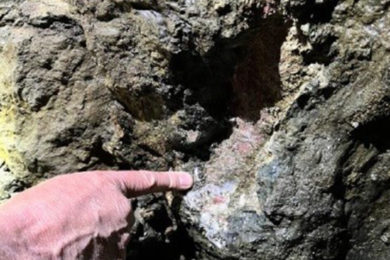South Crofty and Cornwall in general mean a lot to hard rock mining people from England. The county was the world’s leading metal producer back in the 1860s. So, its good to hear from Barry Wills that Europe’s last working tin mine, which closed 12 years ago, is on the brink of reopening as a polymetallic mine, working orebodies containing copper, zinc, silver, lithium and indium, as well as tin. http://min-eng.blogspot.com/2010/05/new-developments-increase-optimism-for.html. Nowthe mine’s owners, Western United Mines, announced a potentially lucrative new source of income – gold assaying abouth 1.6 g/t.
Wills reports that it is “a fascinating and highly complex project. The old South Crofty tin mine worked, in most cases, narrow veins of tin ore in the granite country rock, but exploration of the surrounding killas, a term for highly metamorphosed sedimentary and volcanic rocks, which underlies two thirds of Cornwall, had not, until now, been carried out.
“The present historic resource consists of 53 identified potential orebodies in the South Crofty area, containing varying amounts of copper, zinc, silver, indium, tungsten and uranium, and now gold, as well as, of course, tin.
“There are also lithium brines in the groundwater, which may be exploited not only for this light metal, but also for its heat; the high geothermal gradient could mean that the mine water has potential for sale to local housing and industries for heating purposes.”
Drill cores are analysed every 100 mm by a portable InnovX XRF analyser. The next stage is a complete assay of the core samples, which will be undertaken using the Camborne School of Mines extensive facilities, including XRD, ion probe and QEMSCAN.
Western United may well treat ore underground using some form of modular processing plant. Such keyhole plants have been installed in the Central Rand gold mine in South Africa. The shallow orebodies in this district of Cornwall are found as shallow as 40 m from the surface so decline ramps are ideally suited for this purpose. The target is to mine around 2,500 t/d from two to three satellite deposits and pump the bulk concentrate from the keyhole processing plants to a surface storage facility where tankers will transport the crude mixed concentrate to a central processing plant at the South Crofty site for separation into saleable concentrates or metal.








